
Pha That Luang
Pha That Luang
Published 2024.08.07 by reafla powered by REAFLA
ອະທິບາຍ
Pha That Luang (Lao: ທາດຫຼວງ or ພຣະທາດຫລວງ; pronounced [pʰā.tʰâːt lǔa̯ŋ] 'Great Stupa') is a gold-covered large Buddhist stupa in the centre of the city of Vientiane, Laos.[1] Since its initial establishment, suggested to be in the 3rd century AD, the stupa has undergone several reconstructions as recently as the 1930s due to foreign invasions of the area. It is generally regarded as the most important national monument in Laos and a national symbol.
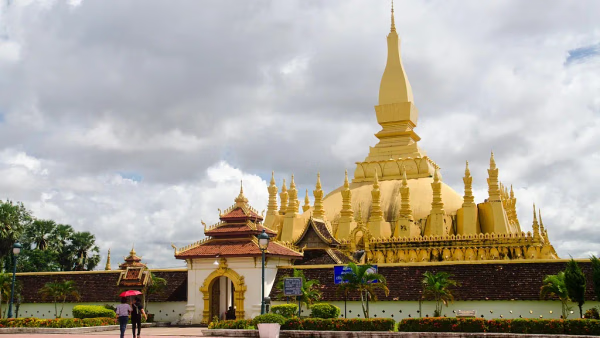
Pha That Luang (Lao: ທາດຫຼວງ or ພຣະທາດຫລວງ; pronounced [pʰā.tʰâːt lǔa̯ŋ] 'Great Stupa') is a gold-covered large Buddhist stupa in the centre of the city of Vientiane, Laos.[1] Since its initial establishment, suggested to be in the 3rd century AD, the stupa has undergone several reconstructions as recently as the 1930s due to foreign invasions of the area. It is generally regarded as the most important national monument in Laos and a national symbol.[2]

Buddhist missionaries from the Mauryan Empire are believed to have been sent by the Emperor Ashoka, including Bury Chan or Praya Chanthabury Pasithisak and five Arahanta monks who brought a sacred relic (believed to be the breastbone) of Lord Buddha and enshrined into the stupa in 3rd century BC.[2] It was rebuilt in the 13th century as a Khmer temple which fell into ruin.
In the mid-16th century, King Setthathirat relocated his capital from Luang Prabang to Vientiane and ordered the construction of Pha That Luang in 1566.[3] It was rebuilt about 4 km from the centre of Vientiane at the end of Pha That Luang Road and named Pha That Luang.[2] The bases had a length of 69 metres each and was 45 metres high, and was surrounded by 30 small Stupas.[2]
In 1641, a Dutch envoy of the Dutch East India Company, Gerrit van Wuysthoff, visited Vientiane and was received by King Sourigna Vongsa at the temple, where he was, reportedly, received in a magnificent ceremony. He wrote that he was particularly impressed by the "enormous pyramid and the top was covered with gold leaf weighing about a thousand pounds".[4] However, the stupa was repeatedly plundered by the Burmese, Siamese, and Chinese.[3]
Pha That Luang was destroyed by the Thai invasion in 1828, which left it heavily damaged and abandoned. It was not until 1900 that the French restored to its original design based on the detailed drawings from 1867 by the French architect and explorer Louis Delaporte.[3] However the first attempt to restore it was unsuccessful and it had to be redesigned and then reconstructed in the 1930s.[3] During the Franco-Thai War, Pha That Luang was heavily damaged during a Thai air raid. After the end of World War II, the Pha That Luang was reconstructed.
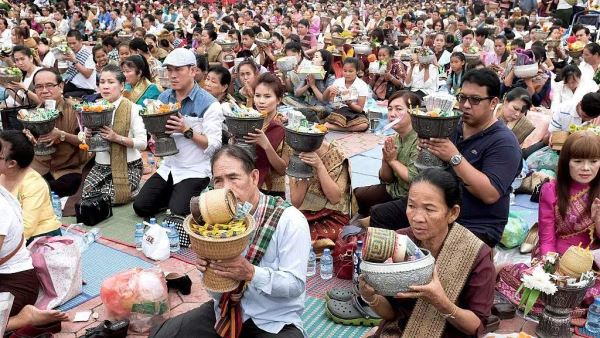
The architecture of the building includes many references to Lao culture and identity, and so has become a symbol of Lao nationalism.
The first level is 223 by 226 feet (68 by 69 metres); the second is 157 feet (48 metres) along each side; and the third level is 98 feet (30 metres) along each side.[3] From ground to pinnacle, the Pha That Luang is 147.6 feet (45.0 metres) high.[3]
Only the pinnacle is covered in real gold, the remainder of the stupa is painted a gold color.
The area around Pha That Luang is now gated, to keep traffic out. Previously visitors could drive around the whole complex. The encircling walls are roughly 279 feet (85 metres) long on each side and contain a large number of Lao and Khmer sculptures including one of Jayavarman VII.[3]
ປະເພດກ່ຽວຂ້ອງ
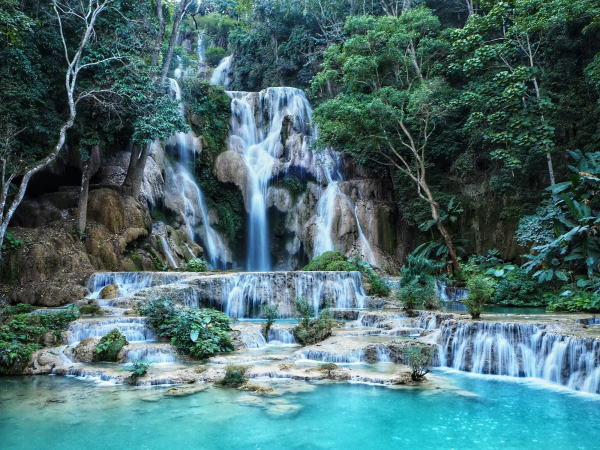
Natural History
Kuang Si Waterfall: A Natural Wonder of Laos
We explore the beauty of Kuang Si Waterfall in Laos and the experiences it offers to travelers who visit it.
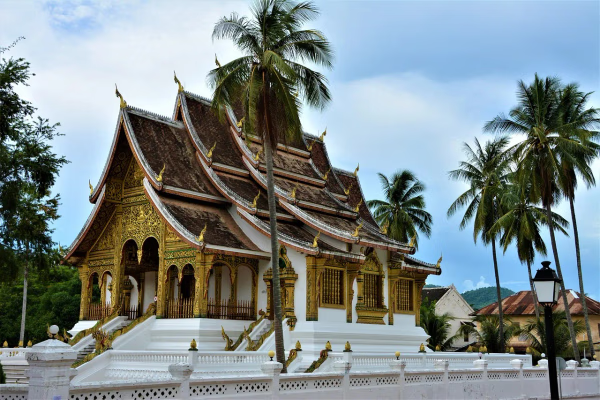
Natural History
Luang Prabang
Luang Phabang, (Lao: ຫລວງພະບາງ/ຫຼວງພະບາງ) or Louangphabang (pronounced [lǔaŋ pʰa.bàːŋ]), commonly transliterated into Western languages from the pre-1975 Lao spelling ຫຼວງພຣະບາງ (ຣ = silent r) as Luang Prabang, literally meaning "Royal Buddha Image", is a city in north central Laos, consisting of 58 adjacent villages, of which 33 comprise the UNESCO Town of Luang Prabang World Heritage Site. It was listed in 1995 for unique and "remarkably" well preserved architectural, religious and cultural heritage, a blend of the rural and urban developments over several centuries, including the French colonial influences during the 19th and 20th centuries.
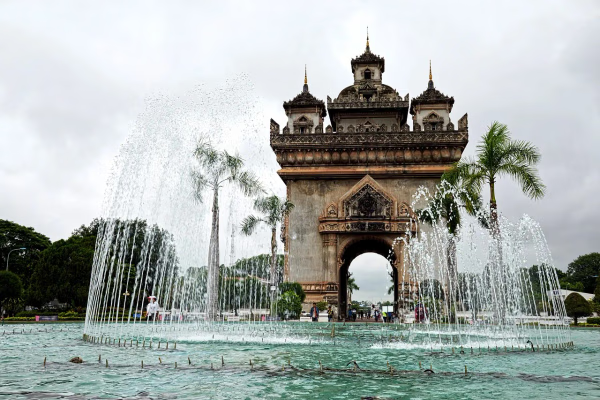
Natural History
Vientiane
Vientiane (/viˌɛntiˈɑːn/ vee-EN-tee-AHN,[3] French: [vjɛ̃tjan]; Lao: ວຽງຈັນ, Viangchan, pronounced [wía̯ŋ t͡ɕàn]) is the capital and largest city of Laos. Comprising the five urban districts of Vientiane Prefecture, the city is located on the banks of the Mekong, right at the border with Thailand. Vientiane was the administrative capital during French rule and, due to economic growth in recent times, is now the economic center of Laos. The city had a population of 1,001,477 as of the 2023 Census. Vientiane is the home of the most significant national monuments such as Pha That Luang, a national symbol of Laos and an icon of Buddhism in Laos. Other significant Buddhist temples can be found there as well, such as Haw Phra Kaew, which formerly housed the Emerald Buddha. The city hosted the 25th Southeast Asian Games in December 2009, celebrating 50 years of the games.